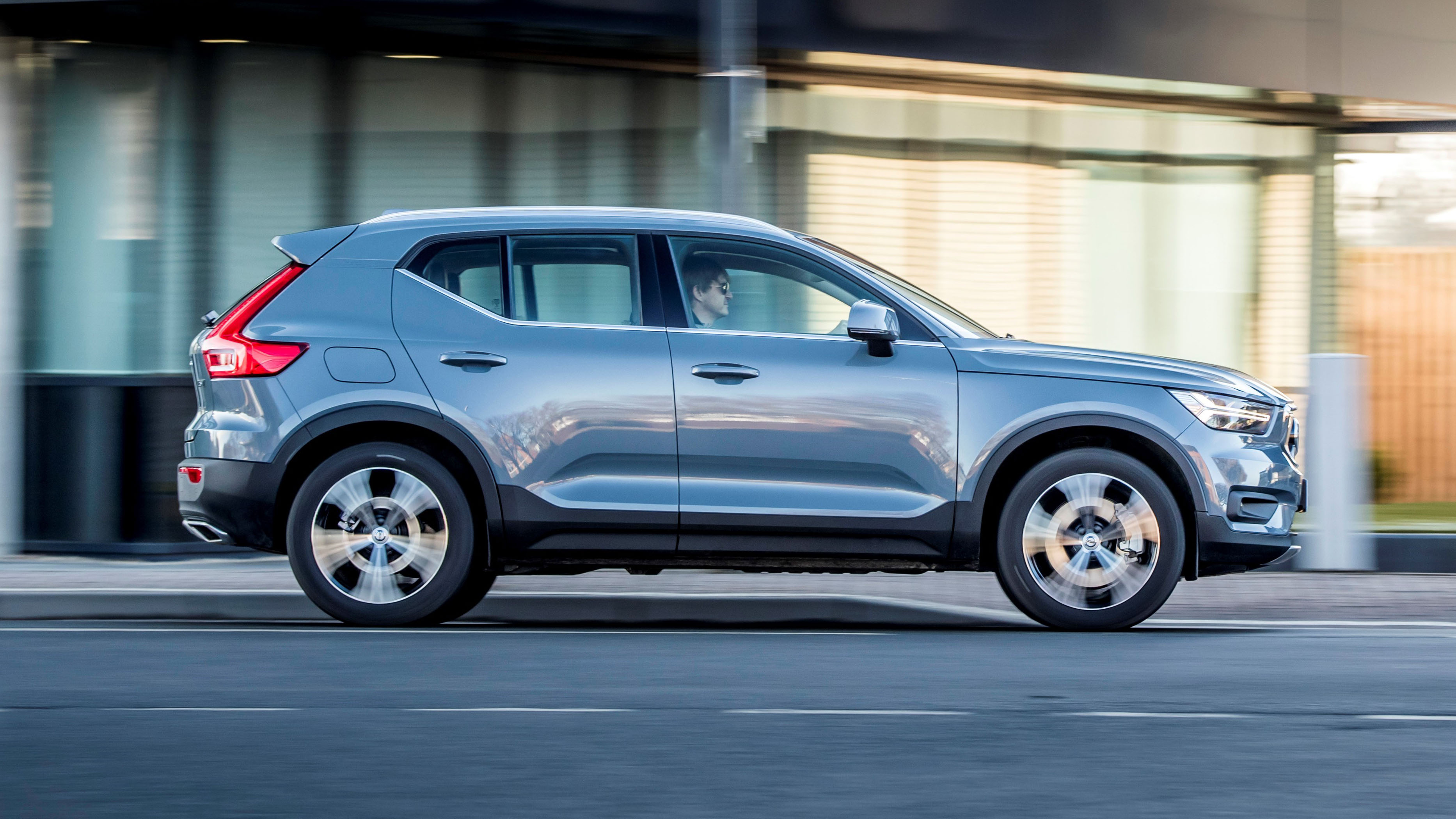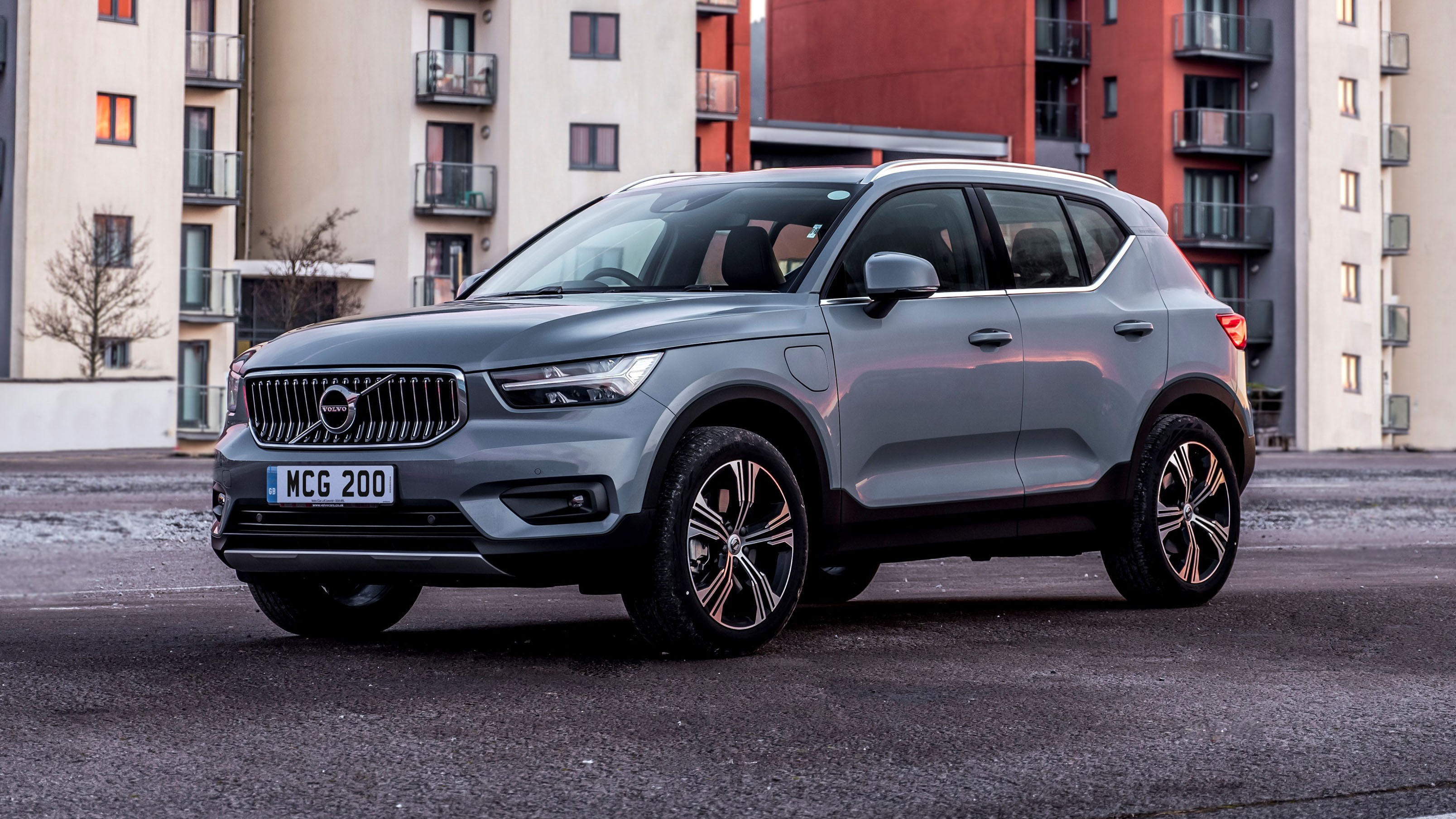
SPEC HIGHLIGHTS
- Battery
Capacity10.7kWh
- BHP
262bhp
- 0-62
7.3s
- Max Speed
112Mph
Looks like a normal enough Volvo XC40...
You're not looking hard enough. Like a Porsche 911, the XC40 Recharge T5 has a filler flap in the front wing. Though this is on the left, and it's an electric socket. The petrol filler is right-rear.
So it's a plug-in hybrid?
Correct. Runs on both. The engine is a 1.5-litre three-cylinder of 180bhp. The electric motor is 82bhp, connected to a 10.7kWh battery. Electric range is 28 miles.
I got a real 25 in jammy urban conditions.
What's the real economy?
As always with a PHEV, depends on how often you plug it in. Before the battery is exhausted, it's very close to infinity mpg. The only time the engine fires in the eco mode is when you floor it. It'll do up to 78mph steady speed in electric-only. Although motorway driving is a bad way to use the electric energy. Best to use it at the city end of your journey.
After the battery is depleted, you'll be doing 40mpg-ish. I did a 45-mile mixed city/motorway/country loop. It was about one-third each of those types, but the country section was fairly vigorous. It drained the battery from full, and netted nearly 70mpg.
If you want to know, the WLTP figure is 119.1 to 139.4mpg, for CO2 of 47-55g/km. That might be attainable on a 35-mile fully-charged trip.
By the way, always set the destination into the navigation, even if you know the way. The system will then take account of the roads and tell the car when to use battery (slow and urban sections) and when to use petrol (faster stuff). It's more efficient that way, especially if the fast bit is at the beginning of your trip.
Top Gear
Newsletter
Thank you for subscribing to our newsletter. Look out for your regular round-up of news, reviews and offers in your inbox.
Get all the latest news, reviews and exclusives, direct to your inbox.
How's the powertrain to drive?
In electric mode, as quiet and smoothly as you'd expect and hope. In hybrid mode, the petrol engine cuts in without much of a murmur as long as you're gentle.
Make a big and sudden demand for power and there's a pause while the engine wakes and comes on boost and the transmission shuffles the gears. Some other PHEVs make less of a fuss. Still, when everything is primed, the performance is lively enough, as shown by the 7.3sec 0-62 time.
Driving in 'power' mode makes the performance usefully more alert, by preventing the engine from shutting down, and using lower gears. If you use power mode often you probably aren't the person for a PHEV, but it can be useful to have in certain windy-road circs.
Back in the 'pure' eco-hybrid mode, the transmission sometimes holds a high gear so the engine groans like a distant avalanche. But not often.
As with most hybrids, the brakes aren't any too progressive in mid-weight use, but then you should be using them gently anyway. It's OK, they'll do an emergency stop well enough.
And the rest of it?
The battery pack sits in the centre of the car, and adds weight. The 3cyl auto hybrid is about 100kg more than the 4cyl auto petrol.
I fancy the suspension isn't as well damped on undulating roads as I remember of the original XC40, and that mass could be the reason. Doesn't matter; the steering is numb – if accurate – and it's not a car that invites you to crack on too much.
Ample compensation comes from a quiet and sweet ride that settles well on motorways and takes urban road-hits with relaxing suppleness.
You can get a stiffer-sprung R-Design version but I'd hesitate. The Inscription trim I tested rides well, and Volvo usually makes a bit of a shuddering mess of things when it tries to do sporty.
It's FWD-only, so not the SUV for snow or tow.
Otherwise is the PHEV situation-normal XC40?
Indeed. Distinctive design on the outside – chunky but not aggressive. A practical cabin with great contemporary decor, and lots of space. The boot's a bit smaller here, but not so's it'd break the deal. Loads of safety.
A nice little tax dodge then?
It does indeed take a carving knife to your BIK tax. But that doesn't mean people buy it and run it just on petrol. Volvo's CEO Hakan Samuelsson recently told Top Gear, "Our Volvo on-call system tells us how much electricity you use. We know that our PHEVs are travelling 40 per cent of their distance in electric".
He reckons that PHEVs are an effective transition to full EV because they encourage investment in charging infrastructure. Volvo is the first manufacturer to have PHEV versions of all its cars, and they all sell in big numbers.
Volvo UK reckons a quarter of all the cars it sells will be PHEVs. They're all to be named Recharge now, not Twin Engine.
But if my work pays for my petrol, why would I bother plugging in?
Volvo is making a pretty compelling offer to encourage you to use the battery. At the end of your first year with the car, Volvo will look at the amount of electricity you, the 'primary driver', has used. It'll then refund you the money for that, at standard UK price per kWh.
So if say you've solar panels and charge up for free, you're actually making profit on every electric mile you drive.
Featured

Trending this week
- Car Review
BMW iX3






